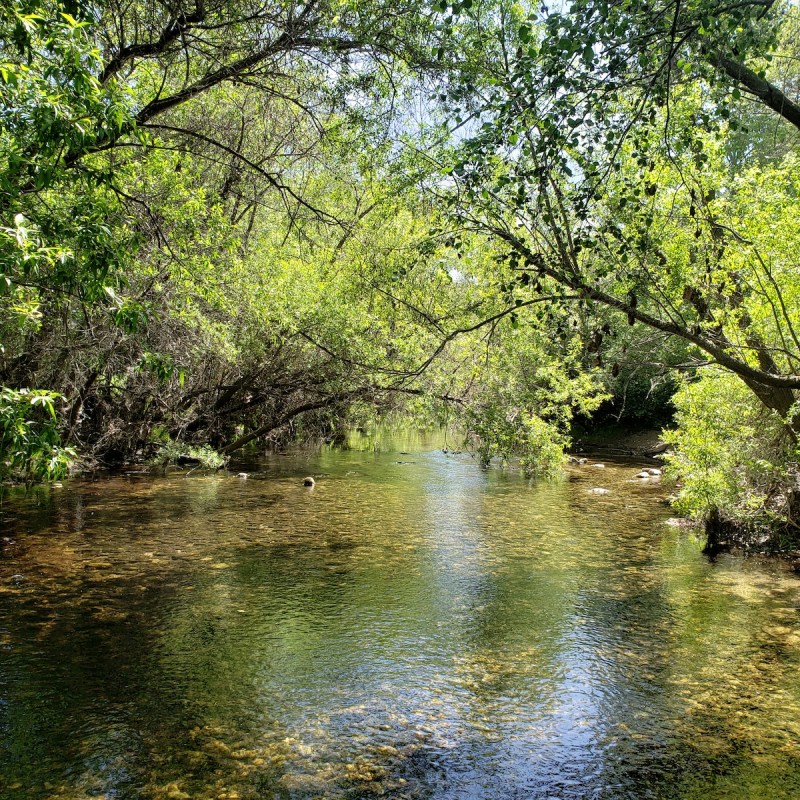
Monterey Bay, located in Monterey County, 2 hours south of San Francisco, is exceptionally fine for birding due to the diversity of habitats, including rocky and sandy beach shoreline, river mouth wetlands, oak woodlands, chaparral, closed-cone conifers, and the gem of all, Elkhorn Slough Estuary. Birding enthusiasts come to the Monterey area from all over the world. There have been a total of 489 species of birds recorded in the county, many from Monterey Bay.
Videos by TravelAwaits
The Monterey Bay is a designated marine sanctuary, rich in marine life largely because of the nutrient-rich cold waters generated by the deep submarine canyon running down the middle of the bay and the California Current that travels north to south along the coast from British Columbia to Baja California, Mexico. Mineral-rich sediments from the canyon dissolve in the seawater and support a vast variety of marine invertebrates that in turn provide food for a great number of dolphins, seals, squid, whales, fish, and birds.
It is an especially prime area for both offshore (pelagic) and onshore birding because of the ocean’s productivity and high oxygen content and the diverse plant habitats.
The Monterey Bay is so bountiful, that feeding “frenzies” can occur for many marine animals, including birds. The bay is a favorite spot for whale watching, fishing, and birding. The Monterey Audubon Society offers field trips to many areas in Monterey County, where it is possible to see many species of birds, including woodpeckers, shorebirds, owls, falcons, hawks, warblers, sparrows, and even California condors. There are ocean-boat tours available at Fisherman’s Wharf, accompanied by naturalists and guides, who are knowledgeable about a wide variety of marine animals, including birds. Here are five places I have frequented to view birds over the years.
Pro Tip: I recommend binoculars that are 8 x 40 or 7 x 35 in power for most birding. Some birders of shore and water birds, like to bring a scope mounted on a tripod. A comprehensive and detailed book for the area is Monterey Birds by Don Roberson.

1. The Carmel River Mouth
The Carmel River Mouth is one of the prime birding areas on the Monterey Peninsula and has been a popular site for avid birders since the early 20th century. In fact, the Monterey Peninsula Audubon Society organized field trips to the area in the 1930s that continue to this day. There have been a total of 350 species recorded within the Carmel River mouth area including terns, gulls, curlews, and sandpipers.
The mile-long beach features a bird sanctuary in a lagoon (just before the Carmel River empties into the sea) with a varied amount of waterfowl, plus incredible sweeping views of the bay.
This is because there is a diversity of habitats and feeding opportunities that attract birds. During fall bird migration, there are often some vagrant eastern warblers, but also a wide variety of ducks, shorebirds, and brown pelicans. The shores of the river are lined with willow and other riparian vegetation, which act as a green landmark for migrating birds. The Carmel Mission is close by, and the ornamental plantings around it also attract birds. There is a lovely trail starting at Bay School just south of the intersection of Highway 1 and Rio Road that leads to Carmel State Beach and the lagoon formed by the river flow. Visit the website to get specific directions to drive to the State Beach.
Pro Tip: Dress in layers as the air coming from the bay is brisk and cool due to the cold water. After touring this site and working up an appetite, head for excellent restaurants in the city of Carmel or the mouth of the Carmel Valley at Rio Road.

2. Pelagic Birding On Monterey Bay
Monterey Bay is also an excellent location to do some incredible pelagic birding. Pelagic birding involves boarding a seaworthy boat and traveling offshore out into the Monterey Bay to observe birds who live most of their lives on or around water. Pelagic trips give you the opportunity to see other marine animals who feed within the protection of Monterey Bay, such as humpback, gray, and killer whales, seals, dolphins, and birds.
Birds travel to this rich source of food from as far away as the Arctic, the Antarctic, and New Zealand. They travel thousands of miles to find the bay, surrounding the Monterey Peninsula. Here is an excellent opportunity to see birds such as auklets, puffins, skuas, petrels, and albatross. Their names alone should motivate you to go! Although offshore birding is a year-round activity, the recommended months to venture on these guided tours are mid-August through October. Monterey Seabirds is a well-known company that leads tours with high recommendations from its customers.
Pro Tip: Dress warmly and wear a hat and even gloves, as you will be leaving in the morning. If you are prone to seasickness, make sure you take the appropriate medication before the trip, as Monterey Bay can have significant swells and choppiness due to wind.

3. Moss Landing State Beach
Moss Landing State Beach is a popular birding spot 15 miles north of Monterey. You will see the twin towers of the Duke Energy Power Plant in the distance just east of the highway. Just past the plant, cross a bridge that goes over the mouth of Elkhorn Slough, the largest estuary south of San Francisco. On your right is the parking area for the Moss Landing Wildlife Area. Here are boardwalks and trails that lead close to the water and depending on the tides, many kinds of shorebirds, including snowy plovers (who breed here), avocets, stilts, egrets, and sandpipers, and water birds like grebes and loons. The traditional birding area in Moss Landing is along Jetty Road, left (west) off Highway 1 a bit north of the wildlife area. The road skirts to the left along the harbor and ends at a rocky jetty. Large flocks of gulls and terns frequent the area as well as diving ducks and cormorants.
If you prefer to travel on the slough to observe birds and marine life, I recommend the Elkhorn Slough Safari, a highly stable pontoon boat that motors a few miles up the slough. The boat carries 26 persons, including a pilot and a naturalist to inform and answer your questions.

4. Elkhorn Slough National Estuarine Research Reserve
The Elkhorn Slough National Estuarine Research Reserve is an approximately 1400-acre reserve with amazing views of the slough and ocean. The estuary was once threatened by development, but due to the efforts of conservation groups and local people, the area is protected and part of the federal wetland reserve system.
At Elkhorn Slough, there is a small visitor center and 7 miles of trails that overlook the full extent of the curving slough. It’s an excellent place to see hawks, kites, swallows, western bluebirds, woodpeckers, and on the edge of the slough, egrets, herons, pelicans, and many shorebirds probing for clams and innkeeper worms in the mud. The reserve is an important stop along the Pacific Flyway for migrating birds. The Southern Pacific railway runs overland on the slough, so you may hear the wonderful sound of the train as it makes its way from north to south.
There are excellent tours led by docents on the weekends, knowledgeable about the plants, birds, local history, and origins of this amazing estuary habitat. Elkhorn Slough is open to the public Wednesdays through Sundays.
Pro Tip: Call ahead for times of the tours. Make sure to bring binoculars. Dogs and food are not allowed on the trail as they interfere with wildlife, but there are picnic tables where you can enjoy lunch or a snack after your adventure.

5. Garland Ranch Regional Park
Garland Ranch Regional Park is popular with hikers and lovers of nature, and there is much to love. The Carmel River flows through the park and to the Pacific Ocean and along the willow-covered banks you are likely to see warblers, towhees, kinglets, and wrens and hear the cries of the California quail. You may even see a few wild turkeys and in the spring the males put on quite a display, fanning their tail feathers to attract females.
There are towering sycamore trees on the floodplain which offer shade as well as homes to woodpeckers such as the acorn woodpecker. There are amazing views if you choose to ascend one of the trails to an elevation of 2,000 feet atop the crest of the Santa Lucia Mountains. Along the trail, there may be a Cooper’s or sharp-shinned hawk among the oak and maple trees, as well as chickadees and the oak titmouse. Before you hike and bird, pick up a species list of common birds at the visitor center. The Park is located 8.6 miles east of Highway 1 at 700 West Carmel Valley Road. It is a lovely place to spend an afternoon or morning.
Pro Tip: Consider visiting Kathy’s Little Kitchen at 13 W. Carmel Valley Road for a delicious breakfast or lunch.
For more on California, be sure to check out these articles:
